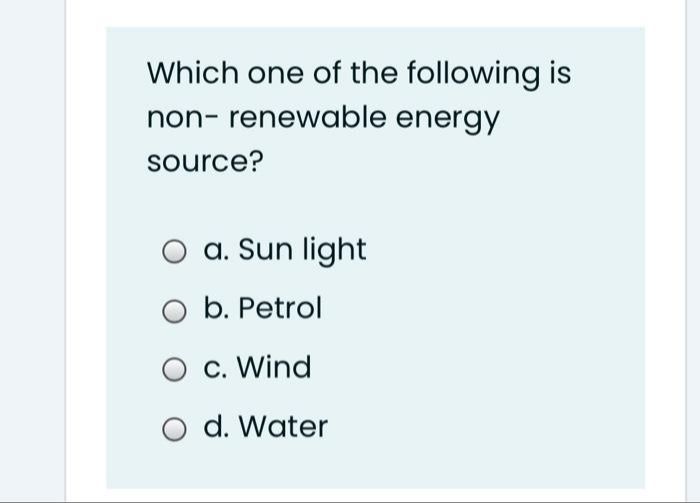Which Energy Source Is More Expensive?
With rising energy demands and concerns over climate change, comparing the costs of different energy sources has become an important topic. This article will analyze and compare the costs associated with various energy sources, including fossil fuels like coal and natural gas as well as renewable sources like solar, wind and hydropower.
Understanding the true costs of energy sources allows consumers, utilities and policymakers to make informed decisions. However, accurately comparing costs is complex, as there are many factors that contribute. These include upfront capital and construction costs, fuel costs, operating and maintenance expenses, financing costs and environmental externalities. This article aims to break down these costs and provide a fair comparison.
Fossil Fuels
Fossil fuels like coal, oil, and natural gas have historically been the dominant energy sources used for power generation. They are formed from the remains of ancient plants and animals that lived millions of years ago and were converted through heat and pressure over time into fuel (Renewable power generation costs in 2020).
In the past, fossil fuels have been relatively inexpensive energy sources, which has contributed to their widespread use. However, costs have been rising. According to IRENA, in 2020 the cost of electricity generation from fossil fuels typically ranged from $0.05 to $0.17 per kWh (Renewable Energy Will Be Consistently Cheaper Than Fossil Fuels by 2020).
Nuclear
Nuclear power utilizes the energy released from splitting the atoms of uranium fuel in a process called nuclear fission. Nuclear plants produce electricity without any direct greenhouse gas emissions during operation. Nuclear power plants, alongside renewables, play an important role in providing low carbon power generation. According to the World Nuclear Association, nuclear power plants supplied 2,653 billion kWh of electricity in 2020, which is about 10% of the world’s electricity. Currently there are 440 operating nuclear reactors worldwide (World Nuclear Association, https://world-nuclear.org/information-library/current-and-future-generation/nuclear-power-in-the-world-today.aspx).
Nuclear power is considered a reliable baseload source of electricity that operates over 90% of the time. The levelized cost of electricity from nuclear power plants is competitive with other baseload sources. According to the U.S. Energy Information Administration, the estimated levelized cost of electricity from advanced nuclear plants entering service in 2025 is $75.20 per megawatt hour (MWh). This is comparable to the cost of electricity from coal ($76.80/MWh) and natural gas ($68.80/MWh) (U.S. EIA, https://www.eia.gov/outlooks/aeo/pdf/electricity_generation.pdf).
Hydropower
Hydropower is a form of renewable energy that utilizes the natural water cycle to generate electricity. It works by using water’s potential energy from dammed rivers or waterfalls to drive turbine generators which then convert that mechanical energy into electrical energy. The water flows through an intake and pushes against blades in the turbine, causing them to rotate. The rotational motion creates mechanical power which spins a shaft connected to a generator to produce electricity.
Hydropower has several advantages as a renewable energy source. It is a very efficient form of power generation, often achieving efficiencies of up to 90%. Once built, operating costs are relatively low compared to other energy sources. It is also flexible – hydropower plants can ramp electricity production up and down very quickly to adapt to changing energy demands. Additionally, the turbines and generators require little maintenance and have long operational lifetimes of usually 60-100 years.
According to the International Hydropower Association, the global weighted average cost of electricity from hydropower projects in 2018 was US$0.047 per kWh, making it the lowest-cost source of electricity in many parts of the world. In the U.S., hydropower is produced for an average of 0.85 cents per kilowatt-hour (kWh) which is very competitive with other energy sources.
Wind
Wind power is a rapidly growing renewable energy source. In recent years, many new wind farms have been built to harness this clean and abundant resource. According to the U.S. Department of Energy, wind power capacity in the United States more than doubled from 2008 to 2014 and provided 5.6% of total U.S. electric power generation in 2017.
Wind energy is one of the lowest-priced renewable energy sources available today. According to a 2017 report by the U.S. Department of Energy, new wind power purchase agreements are being signed at $20 per megawatt-hour or less across many parts of the country. In some regions like the Great Plains states, wind power can now be produced at about 2 cents per kilowatt-hour.
The continued decline in the levelized cost of wind energy is driven by technology advancements, improved siting and forecasting techniques, larger turbines, improved reliability, and increased access to transmission. With its low cost and abundance, wind power has the potential to generate 20% of U.S. electricity by 2030 and 35% by 2050.
Solar
Solar photovoltaic (PV) systems convert sunlight into electricity using solar panels. The solar panels are made up of solar cells that absorb photons from sunlight and convert them into electricity through the photovoltaic effect. Solar PV has seen tremendous growth over the past decade, with global capacity rising from 40 gigawatts in 2010 to over 580 gigawatts in 2019. With solar costs declining rapidly and increased focus on reducing carbon emissions, solar is expected to continue its rapid growth and play a major role in the global transition to clean energy.
The cost of solar power has decreased dramatically in the past 10 years, making it increasingly competitive with conventional energy sources. According to the Solar Energy Industries Association, the average cost of solar panels in 2010 was $7.34 per watt. As of 2019, the average cost is around $2.70 per watt, a decrease of over 60%. This cost decline is driven by economies of scale, technology improvements, and a maturing global supply chain. With continued innovation, the U.S. Department of Energy SunShot initiative has set a goal of reducing unsubsidized solar costs to 3 cents per kWh by 2030.
Currently, the average cost of solar power ranges from 4-8 cents per kWh for large utility-scale installations and 6-15 cents per kWh for smaller rooftop systems, according to the Solar Energy Industries Association. However, costs vary significantly by region and project specifics. In areas with high electricity prices and good solar resources like California and Hawaii, solar can be cost-competitive with conventional electricity.
Sources:
https://www.solar.com/learn/solar-panel-cost/
https://www.energy.gov/eere/solar/sunshot-2030
Geothermal
Geothermal energy comes from harnessing the heat beneath the Earth’s surface. It is considered a renewable energy source because the heat emanating from deep within the Earth is continuously replenished. Geothermal power plants tap into underground reservoirs of steam and hot water to drive generators that produce electricity. There are three types of geothermal power plants: dry steam, flash steam, and binary cycle. Dry steam plants draw steam directly from geothermal reservoirs to turn turbine generators. Flash steam plants pull deep, high-pressure hot water into lower pressure tanks to create steam. Binary cycle plants pass geothermal fluid through heat exchangers to heat a secondary fluid, which then vaporizes into steam. Unlike wind and solar power, geothermal plants offer reliable, constant baseload power since they are not subject to weather fluctuations or time of day.
The cost of geothermal power ranges from 7.8-22.5¢ per kWh, with an average installed cost between $2,700-$5,600 per kW capacity. Geothermal power costs are largely upfront capital costs, with low operating costs comparable to wind energy. The levelized cost per kWh for geothermal is competitive with conventional fossil fuels. Geothermal plants have high capacity factors around 90% or greater, making them a stable, renewable power generation source.1
Biomass
Biomass power is generated by burning organic matter such as wood, plants, biogas, and waste to produce steam that spins a turbine to generate electricity. Sustainably sourced biomass comes from waste materials or purpose-grown crops that don’t compete with food production. According to the U.S. Department of Energy, biomass heating plants have installed costs of $500 to $1,500 per kW-thermal of capacity.
Small-scale biomass plants generating less than 10 MW have costs of $3,000 to $4,000 per kW installed. They can generate electricity at $0.08 to $0.15 per kWh (kilowatt hour), according to Biomass for Electricity Generation – WBDG. For a new 100 MW biomass plant burning wood pellets to earn a 10% IRR, a levelized cost of $0.13 per kWh is necessary, with capital costs of $1,700 per kW, as analyzed by Biomass Power Costs? – Thunder Said Energy.
Comparative Analysis
When comparing the costs of different energy sources on a per kWh basis, there are some clear differences that emerge. According to analysis from the International Energy Agency, the levelized cost of electricity in 2020 for utility-scale solar PV was around $0.068/kWh, compared to $0.115/kWh for onshore wind, $0.162/kWh for gas combined cycle, and $0.182/kWh for coal. This makes solar PV the cheapest option per kWh generated. However, there are pros and cons to consider for each energy source.
Fossil fuels like coal and gas have historically benefited from large existing infrastructure investments and supply chains. But they face challenges due to carbon emissions and pollution. Renewables like solar and wind offer low operating costs and zero emissions, but can have higher upfront capital costs and integration challenges. Nuclear provides steady baseload power but faces very high upfront costs. Hydropower is renewable but dependent on suitable geography. Geothermal is renewable and provides baseload power but also has high upfront costs.
According to analysis from IRENA, renewables are projected to continue seeing declining total costs due to technology improvements and scale effects. The LCOE for solar PV could decline 15-35% by 2030, onshore wind 26-41%, offshore wind 37-49%. This suggests renewables like solar and wind will continue to become relatively more competitive vs fossil fuels in the years ahead.
In summary, while fossil fuels currently benefit from existing infrastructure, renewables like solar and wind are already the most competitive per kWh and are expected to continue seeing rapid cost declines going forward due to technology advances. Each energy source has pros and cons that must be weighed.
Conclusion
In analyzing the costs of various energy sources, some clear trends emerge. Fossil fuels like coal, oil and natural gas remain among the cheapest options today, given their mature infrastructure and economies of scale. However, factors like environmental regulations and depletion of finite resources are likely to drive their costs up over time.
Among renewables, hydropower and onshore wind are currently the most cost-competitive with fossil fuels, thanks to technological improvements that have brought their costs down drastically. Solar costs have also fallen but remain higher than other renewables.
Nuclear power can provide affordable, reliable baseload power, but high upfront capital costs for new plants makes it less viable. Geothermal and biomass offer niche renewable options but are not yet cost-competitive at large scale.
The ideal energy mix combines multiple sources to balance costs, reliability, and environmental factors. Renewables are likely to play an increasing role as governments promote clean energy. But for now, fossil fuels retain a cost advantage in most regions.





